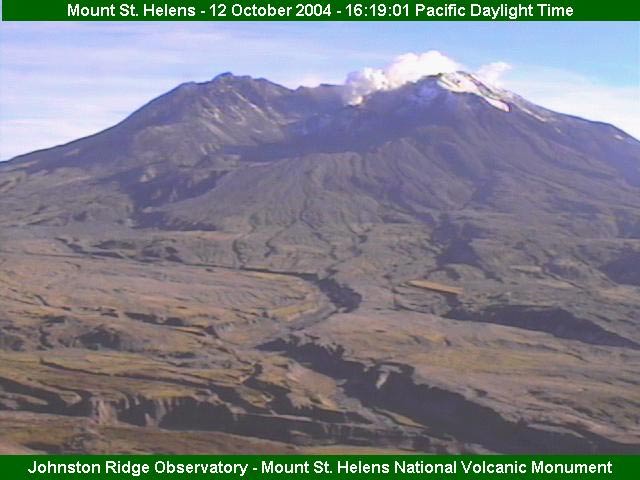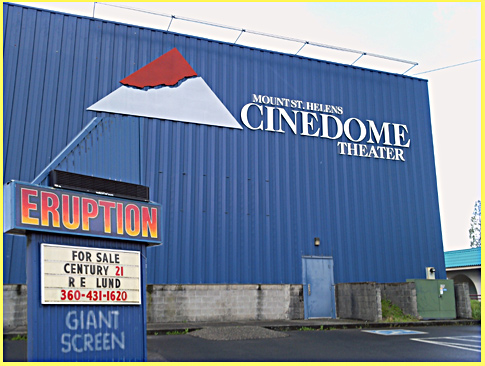

The very next morning (October 5, 2004), the mountain sent up a most impressive plume of steam and ash to 13,000 feet; but, alas, on the beautiful evening of October 4th, the mountain appeared totally at peace to the eye of my camera. The valley below the crater is that of the North Fork of the Toutle River, and the enormous debris avalanche/mudflow from the 1980 eruption still chokes its width. It is very difficult to imagine this river valley clothed in a deep, continous forest of huge trees, but that was the reality before the walls of hot mud tore ten of thousands of mature trees out by their roots and then left the entire upper portion of the river valley buried in an average of 150 foot deep solidified mud, gravel and boulders. Perhaps in a hundred years more a mature forest might yet reestablish itself in this valley. (the above pic is from near the Elk Rock viewpoint at milepost 37). It is of interest to know that Mt. St. Helens had been dormant since 1857 prior to its 1980 eruption, so its surrounding terrain had had about 120 years to re-vegetate.
Below is an image from the government "Volcano
Cam" on October 12th, which shows the mountain with a small
plume of steam, such as had occurred on October 4th, but which
had ceased by the late afternoon of October 4th when I captured
the panorama above.....October 12th was long-awaited day when
scientists finally felt certain that they'd seen the emergence
of fresh, hot lava in the crater! Be sure to continue to page
bottom for information on Mt. Adams the volcano!
Mt. Adams, visible in my panorama, definitely deserves mention as a monster volcano in its own right. Scientists feel sure it is only dormant, and its last eruptions were only about 1,000 years ago. Furthermore, it has a rather terrifying history of letting loose enormous landslides (debris avalanches) and lahars, some of which have travelled as much as 35 miles from the mountain toward what is now the populous White Salmon, WA area. Such destructive events do NOT require any eruptive activity to occur! Since the white man settled in the area, the largest such was a "baby" debris avalanche of "only" 5 million cubic yards in 1921, which travelled "only" four miles down the SW slope of the mountain.
The small town of Castle Rock along I-5 was for decades the gateway to the St. Helens Blast zone, and in later years remained the first stop on the highway to the Johnston Ridge Observatory. But thirty years after the Big Event, one of town's best-known tourist attractions is vanishing into history. It's parking lot empty, it hasn't shown the eruption film for a very long time (2015).
